Superbly restored 1957 Ferguson 35
Posted by Chris Graham on 31st July 2024
Bob Weir takes a trip to North Wales to discover the story behind Colin Griffiths’ superbly restored 1957 Ferguson 35.
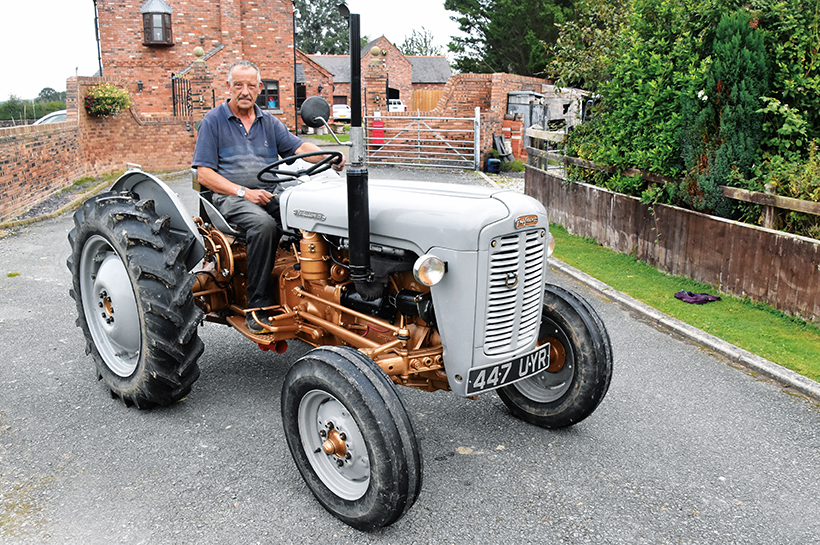
Ferguson 35: Colin Griffiths enjoys restoring tractors and is a real Ferguson enthusiast.
The Ferguson 35 was certainly a worthy successor to the grey Fergie, and was sold with an unusual, gold and grey livery. Colin Griffiths, who has lived in the Wrexham area all his life, owns a fine example and, having retired from the Army, now spends his time restoring old tractors and doing farm work for a local contractor.
“I spent many years in the Army and took part in the Falklands War,” he said. “Although I was brought up in a rural area I don’t come from a farming background and had to learn everything from scratch.”
NEW DEVELOPMENTS
Agriculture is popular in the Wrexham area of north Wales, and has replaced some of the traditional industries in more recent times. Holdings in Wales are benefitting from a new programme to develop the farming business; Farming Connect will be available until March 2025 to support farmers as they prepare to move to the new, Sustainable Farming Scheme. “Farming is a way of life in these parts,” Colin explained. “We’re just getting ready to harvest the maize crop later this month.”
While he was learning to drive tractors for a living, Colin was also building up his own collection. “I’ve collected several old tractors over the years, and enjoy taking them on road runs,” he told me. “But the machine I drive on the day is usually determined by the weather. Nobody likes getting wet, and some of mine are fitted with cabs.”

Some people say that the Massey Ferguson 135 was the best tractor the company ever made, but the 35 certainly gives it a run for its money.
Colin’s first old tractor was an early Fordson Major, which he bought at a local auction during the 1980s, for £375. “The tractor needed a bit of a makeover, but I managed to lick it back into shape,” he recalls. “It got me interested in restoring old tractors, and I’ve been doing it ever since. It’s satisfying work and keeps me out of mischief!”
Although Colin has bought several different makes over the years, he’s always had a soft spot for Ferguson machinery. He acquired his 1957 FE 35 from a local enthusiast.
Harry Ferguson certainly had his work cut out when the time came to think about replacing the TE-20. More power was probably top of the list in a bid to keep his new tractor ahead of the competition. Like a good wine, the Ferguson 35 would take time to mature, before developing into one of the top tractors of its generation.
A SIGNIFICANT UPGRADE
The FE 35 was launched at the Smithfield Christmas show, in 1956. The tractor had been preceded by the American-built TO-35, which had a similar specification. It was originally designed before the merger with Massey-Harris in 1953, and was a significant upgrade over the grey Fergie.
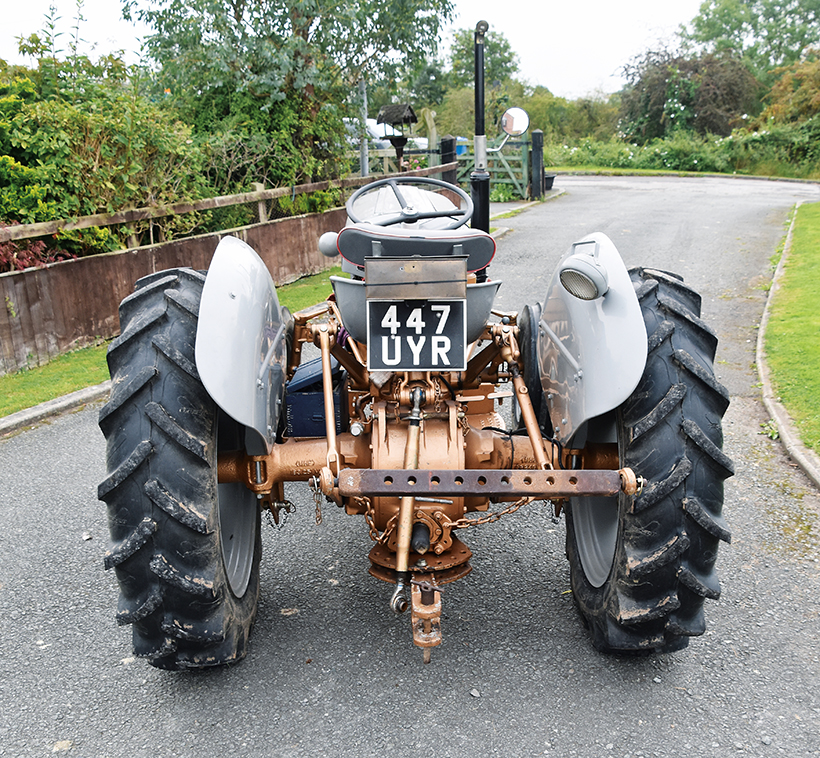
The grey and gold was a good stepping-stone to what would become a very popular tractor.
The new tractor boasted more power, better hydraulics and was available with petrol-, TVO- or diesel-powered engines. Other improvements included independent brakes and dual-lever control for the hydraulic lift. Deluxe versions were also equipped with a live Power Take-Off unit (PTO), which ran independently of forward progress, and was ideal for essential tasks like baling, root crop harvesting and muck-spreading.
The colour scheme of Gold and Grey attracted a lot of interest at the launch, and the new Fergie soon acquired several nicknames, including ‘Golden Belly’ and ‘Golden Bird’. This continued until 1957 when the distinctive livery was replaced by a red and grey paint scheme, plus the triple-triangle ‘Massey Ferguson’ badge. The ‘Ferguson’ decals remained for a short while before being discarded. Another important change was that the four-cylinder Standard diesel was replaced by a three-cylinder Perkins unit, after which the MF 35 went on to become one of the most iconic tractors in farming history.
Ironically, the original tractor was still available (more, or less) in the run-up to the millennium. The Smallholder Tractor Company, based in Evesham, refurbished TE-20 and MF 35 skid units using Lister-Petter diesel engines. The resulting mix of old, reconditioned and new parts were marketed as the ST20 or ST35.
STARTING TROUBLE
“My friend offered me the Fergie about five years ago, because he had issues running the tractor,” Colin said. “He was having problems getting it started and spent ages towing it around his yard. He eventually got fed up and decided to sell it on. The tractor is a local machine and it was painted in Massey Ferguson red and grey, but I soon realised that, under the skin, it was really a grey and gold.”

The jury is still out on the 23C engine, but at least it’s a known quantity.
Because of the Standard 23C engine’s reputation for poor starting, it’s thought that a number of diesel FE 35s were painted red and grey by their owners, to disguise the fact they were actually grey and golds. The idea was that a Massey Ferguson was worth more secondhand than an FE 35, although what Trading Standards would have made of this deception is anyone’s guess!
“The 23C did have some issues with starting, particularly in cold weather. But, once it was up and running, it was a reliable unit,” Colin explained. “Some of the problems were down to the inexperience of owners and their unfamiliarity with the engine.”
It’s widely thought that Standard and Ricardo Engineering Ltd were responsible for some of the issues, given their choice for the design and dimensions of the pre-combustion chambers. This single element is often blamed for the poor starting performance, and some engineers recommend enlarging the port – the hole in the cylinder head facing the top of the piston. Increasing the size of the entrance means faster airflow out of the cylinder which, in turn, improves the cranking speed. This allows the pressure in the pre-combustion chamber to build faster than normal.
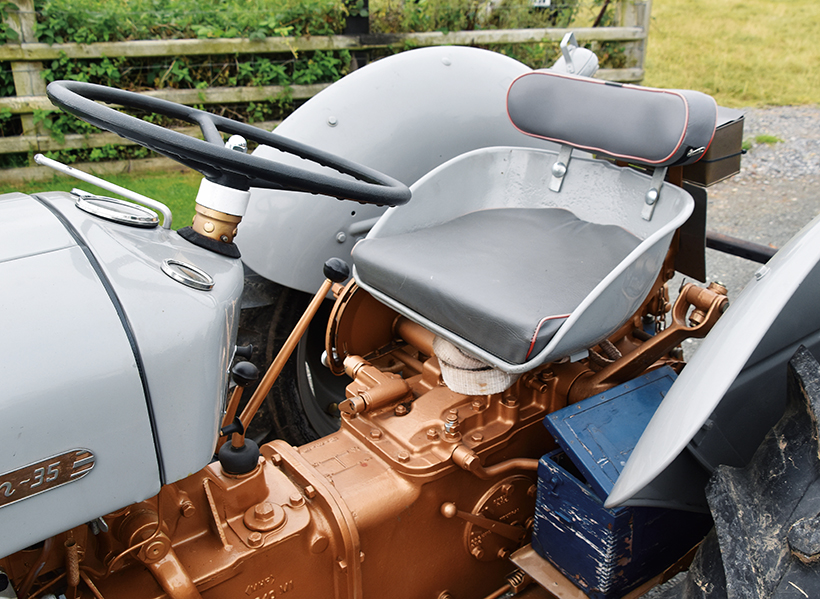
The tractor’s driving position is compact and functional.
“The 23C certainly didn’t help the tractor’s reputation and certainly put off some potential owners,” said Colin. “That said, there are plenty out there who still swear by them.”
INITIAL INSPECTION
Having brought the Fergie home, Colin was able to give the tractor a close-up inspection. “It certainly looked a bit rough and needed restoring,” he recalls. “I decided to do the work myself, although it took a bit of time. It now runs OK and is particularly good on road runs.”
Colin’s tractor (Serial No: SDM 32537) is the standard diesel version, fitted with a dual clutch, and he’s put together his own little workshop over the years and has an extensive toolkit. “Fortunately, my workshop is out of the weather, which is a big help, particularly during the winter months,” he explained. “I’ve found that good preparation is the key to a successful restoration. I source all my spare parts before I start, so that the project won’t be interrupted. It’s better to ‘make haste slowly’, otherwise the job will take more time in the long run.”
One aspect of FE 35 restoration that always seems to arouse controversy is the gold paint colour used. “I’ve seen quite a few FE 35s painted in different shades,” said Colin. “Battleship Grey seems to be a favourite, along with any number of variants of gold. I read somewhere that Harry Ferguson decided on gold paint to celebrate his 50th wedding anniversary!”
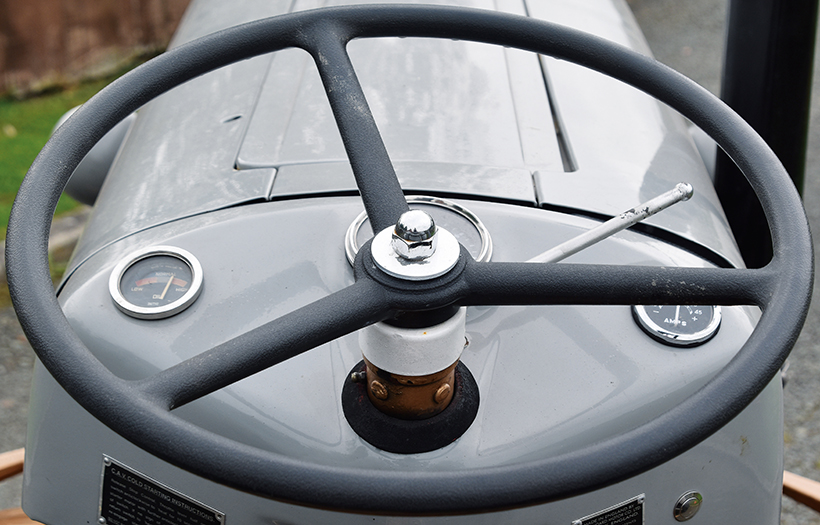
The original gauges are still intact.
Opinions vary, but matt paint is often preferred to gloss, with some enthusiasts suggesting that the correct shade is Jaguar Sandstone. Modern cellulose paints often won’t accept matting agents, which can also add to the controversy. What’s generally accepted is that the correct paint can be found on the original FE 35, which enjoys pride of place at the Massey Ferguson museum in Beauvais, France.
Although Colin is fond of his FE 35, he’s aware of the tractor’s limitations. “A lot of enthusiasts look at the Grey/Gold and think it’s a lovely tractor, but they’re not as good as the later Massey Ferguson 35,” Colin said. “The three-cylinder Perkins version is a far better machine.”
Sourcing the right spare parts is important to Colin, and he uses a variety of suppliers. “I’ve used the internet for paint in the past and local suppliers for parts, including Mill Lane Tractors at Bronington, near Whitchurch,” he explained. “If you’re going to rely on spare parts they need to fit properly, which isn’t always the case.”
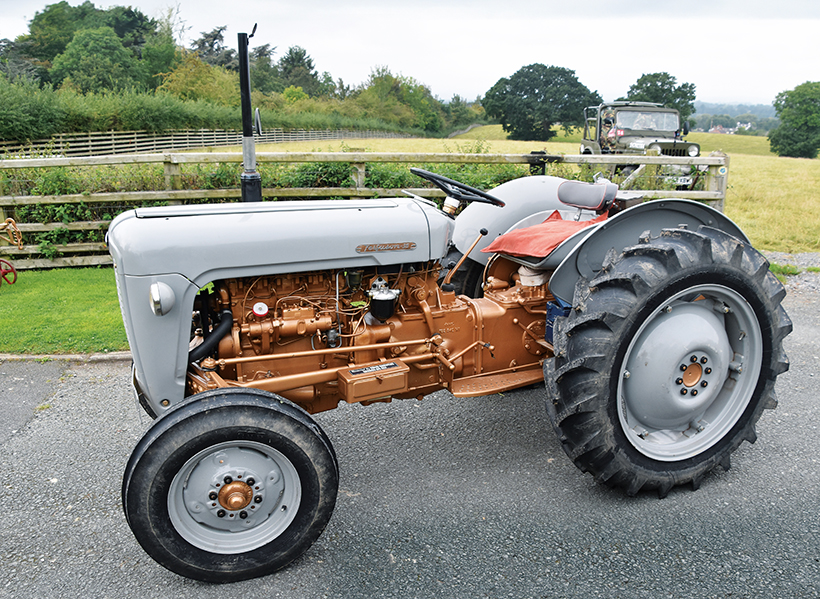
The 35 is a popular tractor with many enthusiasts, and can make a good restoration project.
Colin is also a big fan of vintage tractor rallies and spends many summer weekends doing the rounds on the show circuit. “I enjoy the shows because you get to meet a lot of other enthusiasts,” he said. “Keeping an old tractor can be an expensive and time-consuming hobby, so it’s always nice to swap advice. You also see a lot of Ferguson and Massey Ferguson machinery, including old implements. These are becoming harder to find as a lot of equipment ended up on the scrapheap.”
Colin also plans to collect more Massey machinery in the future. “One of my friends has a very tidy Massey-Harris 30 in his collection,” he explained. “I certainly like the look of that tractor, but I think getting him to part with it will be easier said than done!
This feature comes from the latest issue of Tractor & Machinery, and you can get a money-saving subscription to this magazine simply by clicking HERE
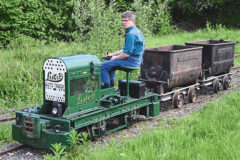
Previous Post
We sample the engineering treats on offer at ListerFest 2024
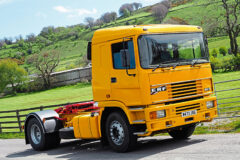
Next Post
Here’s a beautifully renovated, ex-JCB ERF EC11



